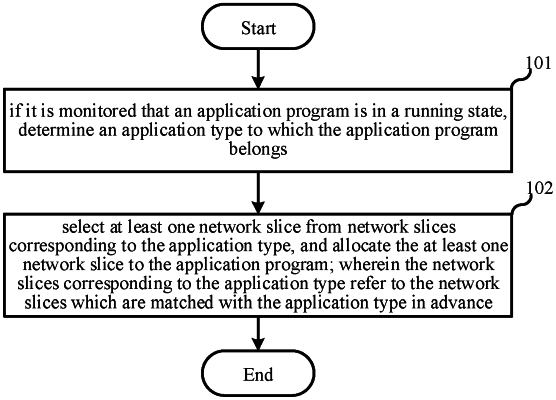| CPC H04L 41/0895 (2022.05) [H04L 41/0836 (2013.01)] | 15 Claims |

|
1. A network slice allocation method, comprising:
in response to monitoring that an application program is in a running state, determining an application type to which the application program belongs; and
selecting at least one network slice from network slices corresponding to the application type, and allocating the at least one network slice to the application program; wherein the network slices corresponding to the application type refer to the network slices which are matched with the application type in advance,
wherein selecting the at least one network slice from the network slices corresponding to the application type and allocating the at least one network slice to the application program comprises:
in response to the application program being in the foreground running state and monitoring that another application program belonging to the same application type as the application program is in the background running state, selecting the L network slices with higher network performance from the K network slices corresponding to the application type, and allocating the L network slices to the application program, where both L and K are integers greater than 0, and L is less than K; or
in response to the application program being in a background running state and monitoring that no other application programs belonging to the same application type as the application program are in the running state, selecting L network slices with higher network performance from K network slices corresponding to the application type, and allocating the L network slices to the application program, where both L and K are integers greater than 0, and L is less than or equal to K.
|